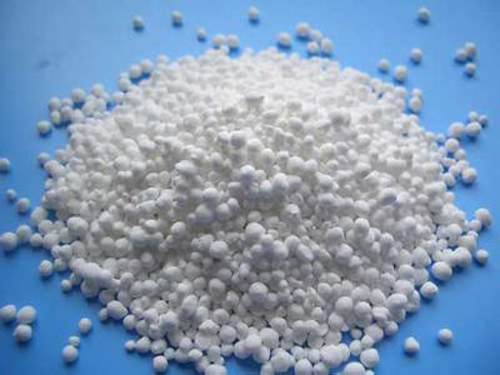
Demand continues to decline, and supply is still increasing. As in previous years, in the late autumn and early winter, the potash fertilizer market will face the upcoming raw material procurement season. The marketing layout and pricing strategy of the supply and demand sides will influence the market trend. Will the price rise or fall into a melee? Still unknown.
Shipping: Continued diversified supply structure
According to customs data, in August 2014, China’s imports of potassium chloride were 705,000 tons, an increase of 34.29% from the same period last year of 525,000 tons. From January to August, the cumulative total import volume was 5.253 million tons, which represented a year-on-year increase of 15.63% from the 4.543 million tons in the same period of last year. China is one of the major demanders for potash fertilizer. Although the price has always been a “depression†in the international market, the higher consumption is still a hot market that international suppliers compete for. In addition to the increase in the import volume of potassium chloride in the first eight months, the number of international suppliers’ market share has also changed.
Russia is one of the major sources of Chinese potash fertilizer imports. From January to August, cumulative imports reached 1.563 million tons, an increase of 2% from the same period last year. After breaking away from the BPC sales alliance, Uralkali changed its sales policy on China to Uralkali in 2014, which reduced the amount of border trade and land transport and increased the amount of sea freight. However, the overall supply remained basically stable, still ranking first. Thanks to the faster shipments in the first half of the year, Israel’s imports from the ICL in the first eight months amounted to 1.021 million tons, an increase of 60% year-on-year, and a significant increase from the same period last year, ranking second in import volume. However, it should be noted that according to the three-year sales agreement signed between ICL and China, the contract supply for the first half of 2014 was determined to be 660,000 tons, and the volume of other potash shipments exceeding 300,000 tons was for the fourth quarter of 2013. As a supplier to Canada, the first supplier of potassium chloride in the Chinese market, the cumulative supply from January to August was 987,000 tons, which was the third-highest drop from the same period of last year, which was 22% lower than the same period of last year. Although the supply has declined, Potassium Potassex has publicly stated that it values ​​the continued cooperation with the Chinese market and set up a Shanghai office in April this year to better serve Chinese customers and grasp the development trend of the Chinese market. In July this year, the overhaul of equipment in the mining area affected the speed of shipment of potash, and the selection of potash fertilizer supply contract between China and 2014 in China has not yet been completed. Zhanjiang Port will ship about 60,000 tons of Canadian potash. Since the BPC sales alliance in late July 2013, the Belarusian Potash Corp has implemented a number-first sales strategy and is active in markets around the world with its price advantage. White Russia’s sales target for potassium chloride in 2014 is 9 million tons, and it hopes to be able to complete it. Chief Executive Officer Elena Kudryavets had publicly stated that: “We welcome more delegations to come to discuss cooperation.†For the long-cooked Chinese market, Belarus has supplied a total of 0.985 million tons of potassium chloride from January to August, second only to Canada. Potash fertilizer ranks fourth, an increase of 55% year-on-year. Jordan's white potassium has gained recognition in the Chinese market thanks to its cost/performance advantage. Jordan Potash Corp's APC supply China with 382,000 tons of potassium chloride in the first 8 months, an increase of 99% year-on-year. Another significant increase in supply came from Chilean SQM, which supplied 91,000 tons of potassium chloride to China from January to August, an increase of 332% year-on-year. As early as the first quarter of this year, SQM had announced expectations that potash fertilizer output will reach 2.3 million tons this year, and announced that it started a cost reduction plan to cope with the decline in potash prices, making its products more competitive in the international market. The German K+S was trapped in the tight supply of its granular potassium chloride products. The total supply to the Chinese market during the period from January to August was 140,000 tons, a year-on-year decrease of 33%.
It is worth noting that, in addition to traditional suppliers, China imported 18,000 tons of imported potassium chloride from Laos from January to August this year. The new supply comes from the Sichuan Kaiyuan company's overseas potassium search project. China is a large potash fertilizer country, but its country lacks soluble potassium resources and goes abroad to “take potassiumâ€. Establishing its own potash fertilizer base overseas has long-term strategic planning significance. As of June 2014, there are a total of 26 potash projects outside China, distributed in 9 countries including Canada, Laos, Congo (Brazzaville), Thailand and Iran. The annual production capacity is 1.97 million tons, and the planned annual production capacity will reach 10.1 million tons. . At present, 26 projects are in different stages of construction. The four projects that have already been put into production are in Laos. Sichuan Kaiyuan is one of the first companies to produce potash fertilizers and feed back domestic markets. It is reported that during the National Day holiday, Jiangsu Lianyungang reached 28,000 tons of new potash fertilizer. The Chinese name of the ship is “Oceanâ€, which is from Hejing Port, Vietnam. It is estimated that the potash supply for this ship is also Lao (Kaiyuan) potash fertilizer.
According to statistics, China currently holds a total of approximately 1.2 million tons of potash fertilizer. However, it was learned from the market that before the window period of nitrogen fertilizer and phosphate fertilizer at the end of September, the port was artificially tight. The existing potash deposits included some of the sold but unshipped goods, and the actual amount of potash available for sale in Hong Kong was less than 1 million tons. . The current high price of the port is stable. In the second half of the year, the big contract has no hope of signing in the short term, and international prices have gradually increased. International suppliers are still trying to increase China's new contract price. After the start of winter fertilizer use, with the increase in demand, the price trend of potash fertilizer still has a certain number of variables. Traders still wait and see the main market outlook.
Domestic: Self-supply ability continues to increase
According to statistics of the branch of potassium minerals (fertilizer) industry of the China Inorganic Salt Industry Association, the cumulative output of domestic potassium potash purified potassium chloride will reach 8.5 million tons in 2014. Among them, about 1.7 million tons of potassium chloride production capacity increased, mainly from Qinghai Salt Lake, Tibetan potash fertilizer and Qinghai Minmetals Salt Lake and other companies to increase production and newly built installations. The Qinghai Salt Lake Group's annual output of potassium chloride is 4.5 million tons and the daily output is 12,000 tons. Due to the procurement of raw materials for the fertilizer period in the previous autumn, the supply of existing orders was tight. The current settlement price is: 57% of powdered potassium chloride reaches the station price of 1,800 yuan (t price, the same below), 60% of powdered potassium chloride reaches the station price of 2010 yuan, and 57% of crystalline potassium chloride reaches the station price of 1840 yuan. 60% crystal potassium chloride to the station price 2050 yuan, 62% crystal potassium chloride to the station price 2220 yuan, 60% granular potassium chloride to the station price 2420 yuan.
** Potassium's annual capacity for new plants is approximately 2.7 million tons, and new capacity for enterprises in the Qinghai region is 950,000 tons, including 480,000 tons of potassium potash from seaside land, new potassium plant put into operation, and 400,000 tons of new plants for CITIC Guoan and new potash fertilizer companies. Cast device. In addition, due to the persistently high potassium prices in the past two years, large-scale compound fertilizer companies across the country have added about 1.7 million tons of new ammonium and Mannheim ** potassic devices.
This year, the annual output of potassium magnesium fertilizer will also be greatly improved. The completion of the transformation of two small production lines at Bindi was completed, and the completion of production of 100,000 tons of crystalline potassium-magnesium fertilizer by Hefeng Power Group, and the stable production of the Guotou Luo potassium 100,000-ton plant. In addition, the completion of the 200,000-ton molten salt project of Qinghai Zhejiang United General Assembly and the 1 million tons of Shenzhen Ainengsen will also significantly increase the demand for potassium chloride in Qinghai.
After the National Day holiday, the domestic market price of potash fertilizer remained stable overall. The preparation of fertilizer in the fall is basically completed, and the purchase of raw materials for the downstream compound fertilizer plant is gradually decreasing, but the winter reserve fertilizer will start gradually from the end of the month. At present, enterprises in the Qinghai region are basically without stocks. Affected by the poor shipping in the previous period and the conversion of potassium from most small plants to potassium, the company will take orders for shipments in the short term. There will be no sales pressure. After entering October, the market in Northeast China will start one after another. As the raw material of BB fertilizer, the supply of granular potassium chloride is still tight, and the price remains high. In addition to the Northeast market this year, the consumption of BB fertilizer in the southern region has also increased, driven by this, it is expected that the price of domestic potash will also be focused on consolidation in the short term.
Border trade: Supply dropped sharply
From January to August, the cumulative import volume of potash from the border trade from Russia was 769,000 tons, a substantial decrease from the same period of previous years. The reason is that the lower price in the Chinese market is the main reason. This year, due to the better climate for planting and the increase in grain planting area, the demand for potash fertilizer in the Brazilian market has increased significantly compared with previous years. In addition, the demand for potash fertilizer in Europe and the United States in the first half of the year has continued to thrive. Recently, Uralka Potash Corporation Uralkali announced the production of potash fertilizer. In the third quarter of 2014, the output of potassium chloride was 3.2 million tons, an increase of 18% from the 2.7 million tons in the same period of last year. From January to September, cumulative production of potassium chloride was 9.2 million tons, which was approximately 2 million tons more than the same period of last year. In addition, according to the medium-term report of Wushen, the sales volume of potassium chloride in the first half of 2014 was 6.603 million tons, an increase of 42% year-on-year. Of which domestic sales of 978,000 tons, unchanged from the same period last year; exports of 5.075 million tons, an increase of 54%. At the end of July 2013, when Ukrainian Metals left the BPC sales alliance, it stated that its sales strategy will be based on quantity first. After entering 2014, with the stability of production and sales volume, the new CEO of Ukrainian Potash has said that the sales strategy will return to priority prices. Therefore, Russians are more willing to sell potash fertilizer to Brazilian and European and American markets that are priced 20 to 30 US dollars higher, and supply limited quantities to the Chinese market, which has a slightly lower price.
Ukrainian Uralkali said in a public statement in the third quarter that it is expected to export 1.3 million tons of potash fertilizer to China through the railway in 2014, which is 700,000 tons less than the total amount of 2 million tons of border trade last year. According to the analysis of the sales volume of 1.3 million tons published by Ukrainian Potash, it is expected that the overall trade volume of border trade will be less than 550,000 tons in the fourth quarter. In the fourth quarter of 2013, one of the main factors for the price recovery of China's potash fertilizer market was that the volume of border trade was reduced by 300,000 tons compared with the same period of 2012. This year, according to the current situation, the supply of border trade alone will be the fourth quarter of the Northeast market. The demand is still difficult to meet. Therefore, since the end of August, border traders mostly stopped offering because of tight supply. Some traders are optimistic about the market demand, hoarding some of the red potassium used to squeeze large particles for sale.
** Potassium: Sustained high temperature for both supply and demand
In 2014, due to the substantial increase in the use of water-soluble fertilizers and nitroxabase fertilizers and the unacceptable consumption of by-products**, the supply of the potassium market continued to be tight. In the event that many fertilizers are trapped in the decline in overcapacity prices, **potassium prices have continued to rise all the way out. It is estimated that the resource-based potassium production capacity in 2014 will be 2.59 million tons and the output will be 1.9 million tons. Processing type potassium production capacity of 3.54 million tons, the actual output of 1.9 million tons.
After entering October, **potassium enterprises are still mainly shipping pre-orders, and orders have been placed at the end of the month. Although the sales rate of new orders has slightly slowed, there is no inventory and sales pressure in the short term. In addition, Yunnan ** fertilizer bidding also supports the market price. The daily output of potassium in Luobupo, Xinjiang is more than 4,000 tons, and the market supply is tight. The mainstream price of 51% powdery **potassium is 3,600 yuan, and the particles are temporarily not quoted. It is reported that the number of Luo potassium potassium fertilizer was 140,000 tons, and the bid price was 3580 yuan. Mannheim method 50% powder ** potassium mainstream factory price 3500 ~ 3650 yuan, 52% of the mainstream price of powdery ** potassium ex-factory price 3750 yuan, particle ** potassium mainstream factory price 3700 ~ 3750 yuan. Affected by supply and demand, prices are expected to remain stable until the end of the year.
Guanyu Ceramics Tiles are top quality, rectified, low water absorption, acid-resistant, anti-bacterial, non-slip and wear-resistant.
The Roto-Printing technology makes the same design with various look and feeling. You can always find the tile you like to build your own style!
Top Grade Glazed Surface Matt Finished Porcelain Tile / Customizable Non-Slip Rustic Porcelain Tile / Lappato Glazed Porcelain Tile
Application:
1. Floor Tile , wall tiles in a bathroom, kitchen and other living space.
2. Hotel lobby flooring, airport, super market, shopping mall, warehouse flooring big project etc.
3.Indoor/Outdoor: Indoor,Commercial Area.
Packing information:
SIZE: 600*600 mm: 4PCS/CTN, 32KG/CTN, 1.44SQM/CTN, 840CTN/20′, 1,209SQM/20′, 27,300KG/20′
SIZE:800*800 mm: 3PCS/CTN, 50KG/CTN, 1.92SQM/CTN, 540CTN/20′, 1,036SQM/20′, 27,270KG/20′
In neutral cartons and put on wooden pallet.
Why Guanyu Ceramics?
Guanyu Ceramics, specializing in making mosaics, polished tiles, rustic tiles and glazed internal wall tiles, makes our brand "Guanyu Ceramics" popular around the world and established worldwide distribution Channels in many countries and areas under the support of many clients.
We will supply you:
- Good Quality:
We got ISO9001:2000, ISO14001:2004, GB/T28001-2001 certificate, compulsory 3C certificate and strictly carries out their standard systems. And our inspection deptment supervise all the goods and it makes the goods are what your expected.
- Reasonable Price:
Our reasonable price will help you to enlarge your market.
- 10 years tiles exporting experience:
Over 10 years of exporting experience on tiles guarantee that all the steps of exporting can goes smoothly and it saves your time and money of getting goods.
- Meet Your Needs:
If your requirement go beyond our tiles, please contact us with your tiles designs. We are always happy to discuss your needs.




Please kindly contact us for further details if you are interested, thank you very much!
Line Star Rustic Tile,Rustic Tile ,Metallic Rustic Tile,Floor Tile
Foshan Guanyu Group , https://www.guanyu-group.com